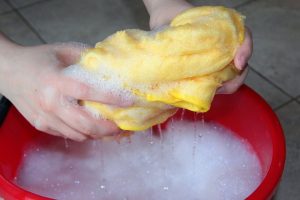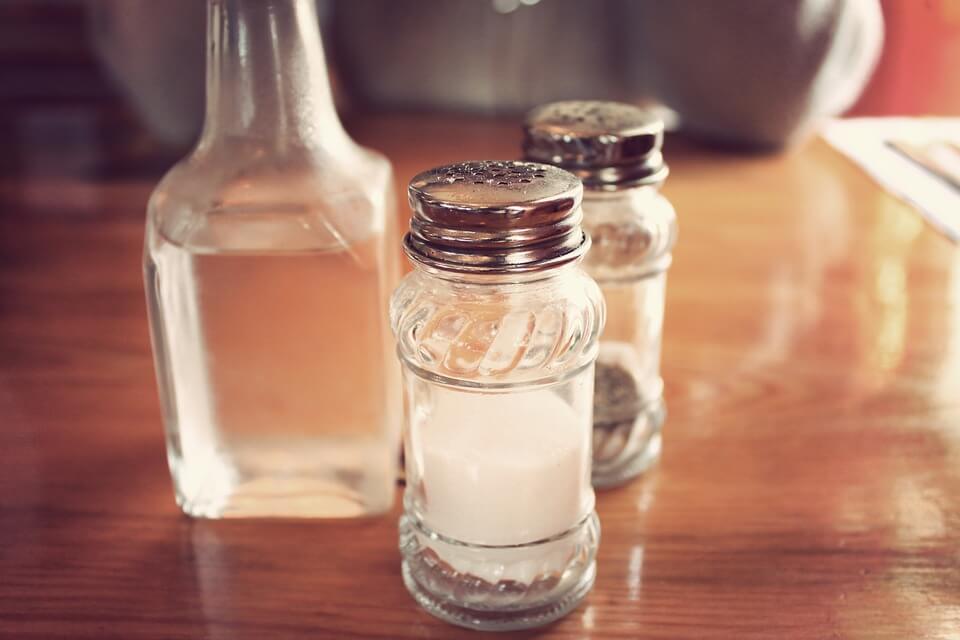6 Tricks to Remove Glue Stains From Furniture

In this article, we’ll show you how to remove glue stains from furniture. It’s inevitable that different parts of your home will be marked and stained over time.
Your furniture, walls and doors might suffer. If there are children in the house, this can happen much more frequently.
Wooden furniture can get stained with glue for a few different reasons. For example, children can stain it when they take off stickers. In addition, it can get dirty when someone does a craft on it, or even when trying to fix it.
In reality, nobody likes to see these marks. To make matters worse, you can’t simply wash them off with a damp cloth.
Before trying a sharp object that will surely scratch the furniture, here are some tips:
How to remove glue stains from furniture
Some tips before starting
Before getting right into the tricks themselves, there are a few things you should know. For example, you can soften the glue with a hair dryer. The heat helps the glue start to come off.
Also, know that these procedures don’t apply to glass. Glass requires using other products so you don’t ruin it.
1. Turpentine
The powerful effect of turpentine can be perfect to remove glue stains from furniture. To use it, put a good amount of turpentine on a cotton ball and rub it on all of the stain. Then, let it sit for a few minutes.
When it’s dry, soften it with a hair dryer on high heat. The combination of turpentine and heat can also work on glass. They won’t damage furniture or glass.

2. Oil
This trick can be very useful to get rid of sticker stains. This usually happens on bed frames, furniture and glass.
How can you remove them? Easy! Just put some oil on a cotton ball and rub it on the adhesive. After, you’ll only have to remove the oil with a damp cloth.
3. Nail polish remover
Some glue stains are harder to remove than others. Specifically, the ones that contain cyanoacrylate. To remove them, you need stronger products, like acetone.
Nail polish remover is perfect for this. It’s mainly composed of acetone. Apply it to the area you want to clean, and remove the glue with a nail brush.
Caution: Don’t apply acetone to plastic. It could deteriorate it. If your furniture contains plastic, it’s best to use other products to clean it.
“You can soften the glue with a hair dryer. The heat helps the glue start to come off.”
4. Lemon and salt
In addition to being excellent for your meals, lemon and salt can be a great team for cleaning. Among other uses, they can be great at removing glue stains from wooden furniture.
Simply cut a lemon in half and squeeze it on the stain. Wait 5 to 10 minutes for it to work.
Then, sprinkle salt over where you squeezed the juice. After a few minutes, the glue will have softened completely. Then, you can easily remove it with a plastic or silicon spatula.
5. White vinegar
This is another common element in cleaning products. Like nail polish remover and lemon, rubbing it on glue stains will have an almost immediate effect. This will let you easily remove the stain without too much effort.

6. Alcohol
Finally, you can also consider using alcohol, something we all have at home. You can apply this just like the other tricks we mentioned earlier.
First, pour some alcohol on a cotton ball and rub it on the stain. Repeat this process as many times as necessary to remove glue stains from furniture.
If it’s adhesive glue and not from stickers, always remember you can use a hair dryer to help. This can be a great addition to any of the techniques we mentioned.
With these simple tricks, you can remove glue stains easily. Your furniture will look better than ever.
In the future, try to use surface protectors whenever you need to use glue on wood surfaces. This will protect your furniture to save you time in the future.
All cited sources were thoroughly reviewed by our team to ensure their quality, reliability, currency, and validity. The bibliography of this article was considered reliable and of academic or scientific accuracy.
-
Meesters JAJ, Nijkamp MM, Schuur AG, et al. Cleaning Products Fact Sheet: Default parameters for estimating consumer exposure: Bilthoven (NL): National Institute for Public Health and the Environment; 2018. 11.
This text is provided for informational purposes only and does not replace consultation with a professional. If in doubt, consult your specialist.








